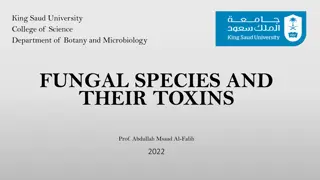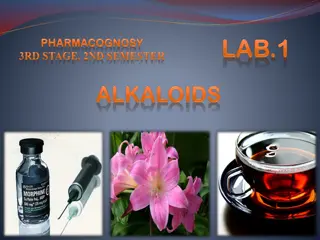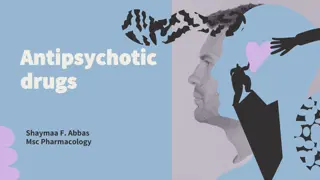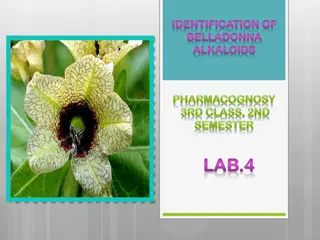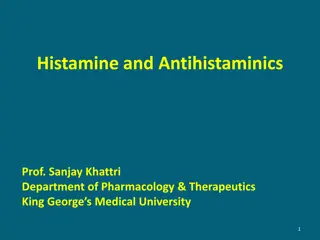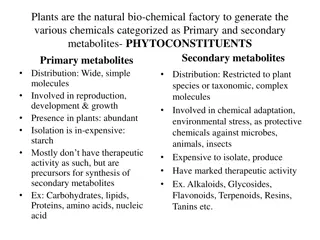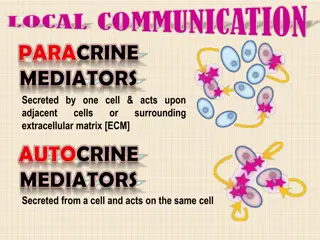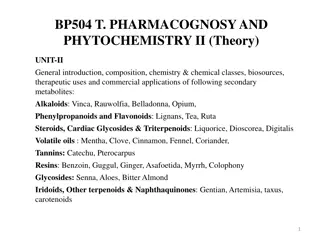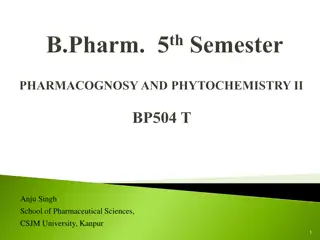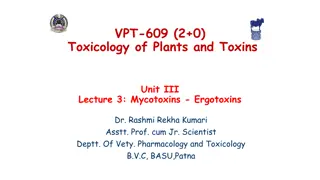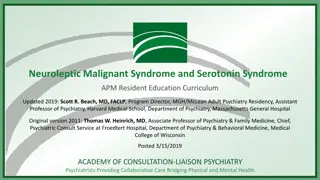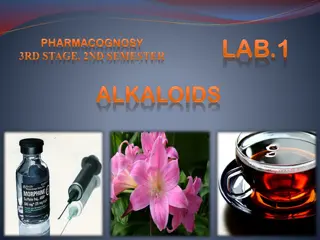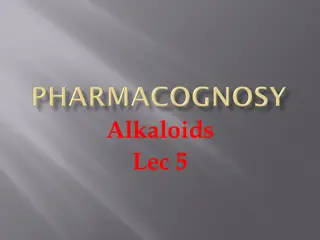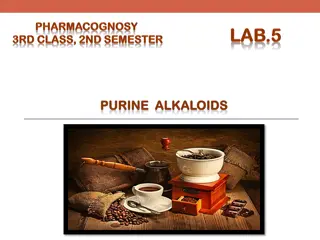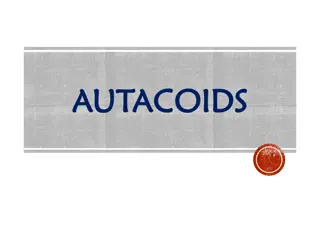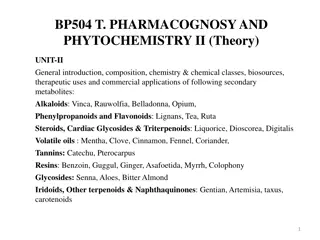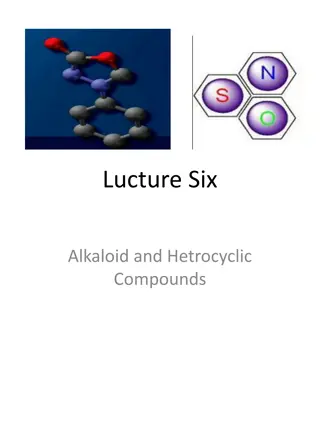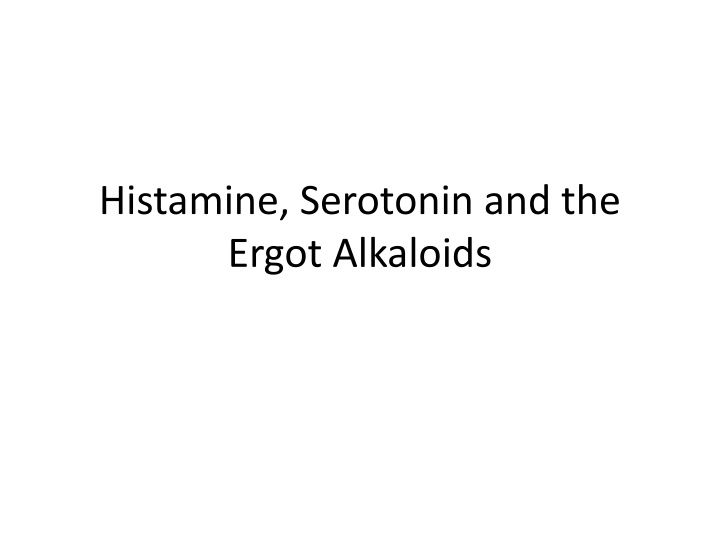
Histamine, Serotonin, and Autocoids
Explore the roles of histamine and serotonin as neurotransmitters, the significance of autocoids in the body's self-remedy mechanisms, and the pharmacodynamics of histamine receptors. Learn about their functions and implications in various bodily processes.
Download Presentation

Please find below an Image/Link to download the presentation.
The content on the website is provided AS IS for your information and personal use only. It may not be sold, licensed, or shared on other websites without obtaining consent from the author. If you encounter any issues during the download, it is possible that the publisher has removed the file from their server.
You are allowed to download the files provided on this website for personal or commercial use, subject to the condition that they are used lawfully. All files are the property of their respective owners.
The content on the website is provided AS IS for your information and personal use only. It may not be sold, licensed, or shared on other websites without obtaining consent from the author.
E N D
Presentation Transcript
Histamine, Serotonin and the Ergot Alkaloids
Histamine and 5-HT Histamine and Serotonin (5-HT) are biologically active amines that function as neurotransmitters They are often used in non-neural tissues
The Autocoids Histamine, serotonin and endogenous peptides, prostaglandins, leukotrienes, and cytokines are called autocoids, meaning self- remedy in Greek
Histamine Histamine is an important mediator of immediate allergic and inflammatory reactions Histamine also plays an important role in gastric acid secretions
Histamine Histamine also functions as a neurotransmitter and neuromodulator Histamine also plays an important role in chemotaxis of white blood cells
Histamine Histamine is formed from the amino acid histadine Immunologic processes account for the most important pathophysiologic mechanism of mast cell and basophil histamine release
Histamine Histamine and mast cells release histamine explosively when antigens come in contact with the cells IgE antibodies This degranulation of the mast cells and basophils require calcium and energy
Histamine Histamine is also released by damaged tissues Histamine causes vasodilation and capillary leakage, allowing plasma immune mediators to enter the area
Histamine Pharmacodynamics Histamine activates specific cellular receptors on surface membranes We know of 4 types of histamine receptors
Histamine Pharmacodynamics H1 receptors are found on smooth muscle and endothelium H2 are found on gastric mucosa
Histamine Pharmacodynamics H3 receptors are found in nerves in the gut responsible for peristalsis H4 receptors are found on white blood cells
Histamine Neural Action Histamine is a powerful stimulant of sensory nerve endings, especially those that mediate pain and itching
Histamine Vascular Action Histamine causes vasodilation and lowers blood pressure
Histamine Bronchiole Action Histamine causes bronchoconstriction because of bronchial smooth muscle constriction People with asthma are especially sensitive to histamine
Histamine Gut Action Histamine causes contraction of intestinal smooth muscle
Histamine Stomach Acid Secretion Histamine causes secretion of stomach acid secretion
Histamine Scombroid Poisoning Scombroid fish poisoning (scombrotoxism, scromboid ichthyotoxicosis) is a food-related illness typically associated with the consumption of fish Originally the illness was associated with scombroidea fish (e.g. large dark meat marine tuna, albacore, mackerel), however, we have identified the largest vector to be nonscombroid fish, such as mahi-mahi and amberjack
Histamine Scombroid Poisoning The principal agent in scombroid poisoning is histamine, along with other biologically active amines
Histamine Scombroid Poisoning Scombroid toxicity is usually self-limited but may cause significant discomfort. The onset of symptoms is usually 10-30 minutes after ingestion of the implicated fish, which is said to have a characteristic peppery bitter taste. The symptoms are nonspecific and may include the following:
Histamine Scombroid Poisoning Flushing Palpitations Headache Diarrhea Sense of anxiety or unease Prostration (complete physical or mental exhaustion) Loss of vision (rare) Diffuse, macular blanching erythema (most common) Tachycardia Wheezing (generally only in histamine-sensitive asthmatics) Hypotension or hypertension
Histamine Pharmacology Histamine is used clinically as a provocative test in pulmonary function tests It has no clinical use otherwise
Histamine Antagonism Histamine actions are the opposite effect of epinephrine, although different receptors and physiologic processes are involved Epinephrine is the physiologic antagonist of histamine
Histamine Antagonists Several histamine receptor antagonists or blockers have clinical usefullness H1 Antagonists Antihistamines H2 Antagonists H2 Blockers
Antihistamines H1 Antagonists Antihistamines exert their antiallergy properties by antagonizing histamine at the H1 receptor However, many of the actions of antihistamines have nothing to do with H1 receptor blockade
Antihistamines H1 Antagonists Sedation Anxiolytic effect Antinausea and motion sickness Antiparkinsonian effect Anticholinergic effect None of these effects are due to H1 antagonism
Antihistamines H1 Antagonists Serotonin Blockade Adrenergic Blockade None of these effects are due to H1 antagonism
Antihistamines H1 Antagonists Diphenhydramine (Benadryl) Antiallergy Antiparkinsonian Sedative
Antihistamines H1 Antagonists Hydroxyzine (Atarax) Antipruritic Anxiolytic
Antihistamines H1 Antagonists Meclizine (Bonine) Motion sickness Vertigo
Antihistamines H1 Antagonists Cyproheptadine (Periactin) H1 antagonist that also prevent serotonin production Indicated for allergy Indicated for serotonin syndrome
Antihistamines H1 Antagonist Newer generation H1 blockers have a more selective effect on H1 blockade - fexofenadine (Allegra) - Loratadine (Claritin) - Ceririzine (Zyrtec)
H2 Blockers H2 histamine receptor antagonists are used to prevent excess stomach acid Cimetidine (Tagamet) Famotidine (Pepcid) Nizatidine (Axid) Ranitidine (Zantac)
Serotonin 5-Hydroxytryptophan (5-HT) It has been known that when blood is allowed to clot, a vasoconstrictive substance is released from the clot This substance was called serotonin
Serotonin (5-HT) This substance was later found to have many other properties Serotonin is an important neurotransmitter, a local hormone in the gut, and is involved in migraine headaches
Serotonin (5-HT) Serotonin is synthesized from the amino acid tryptophan 5-HT is metabolized to 5-HIAA (5- hydroxyindoleacetic acid) by monoamine oxidase (MAO)
Carcinoid About 10% of carcinoid tumors secrete excessive serotonin (5-HT) Flushing Diarrhea Wheezing Abdominal cramping Peripheral edema
5-HIAA Carcinoid tumors can secrete excessive amounts of serotonin 24-hour urine secretion of 5-HIAA is a diagnostic test for carcinoid tumors
Serotonin (5-HT) There are many serotonin receptor subtypes mostly in the brain There are subtypes of serotonin receptors in the gut, smooth muscle, and platelets as well
Serotonin (5-HT) Serotonin has no clinical application as a drug But many serotonin agonists and antagonists have extensive clinical value
Serotonin (5-HT) Agonist Buspirone (Buspar) is a 5-HT1A agonist - nonbenzodiazepine anxiolytic
Serotonin (5-HT) Agonists Sumatriptan (Immitrex) is a 5-HT1D/1Bagonist - migraine headache
Serotonin (5-HT) Agonists There are many triptans on the market for migraine headaches - sumatriptan (Immitrex) - Naratriptan (Amerge) - Almotriptan (Axert) - Zolmitriptan (Zomig) - Nizatriptan (Maxalt) - Eletriptan (Relpax)
Serotonin (5-HT) SSRI are commonly prescribed for depression, anxiety, and obsessive compulsive disorders
Serotonin (5-HT) There are many SSRI s in the markey - fluoxetine (Prozac) - sertraline (Zoloft) - paroxetine (Paxil) - citalopram (Celexa) - escitalopram (Lexapro)
Serotonin (5-HT) Antagonists Ondansetron (Zofran) is a 5-HT antagonist used for nausea and vomiting of cancer chemotherapy
Serotonin Syndrome Is a potentially fatal complication of excess synaptic serotonin by the use of one or more serotonin increasing drugs such as: - SSRI - MAOi - the migraine triptans - ondasetron (Zofran)
Serotonin Syndrome Presents clinically as: - Hypertension - hyperreflexia - tremor - hyperthermia - diarrhea - mydriasis - agitation - coma

